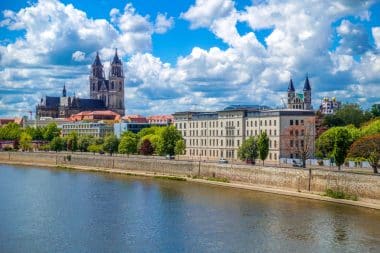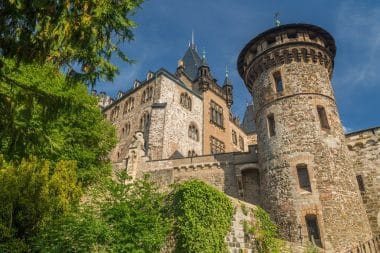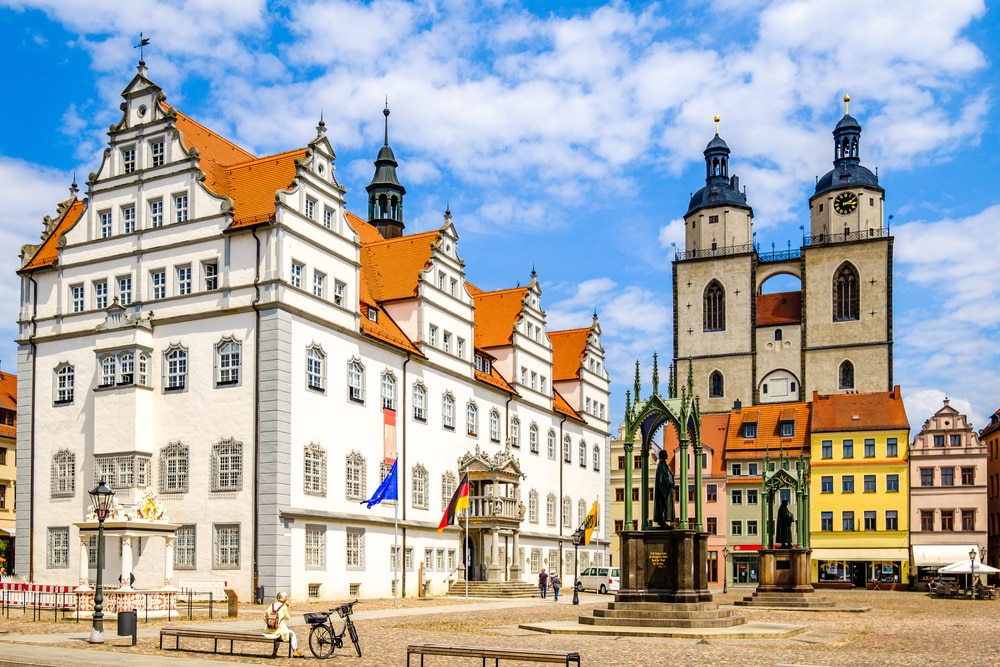When it comes to the facets of Saxony-Anhalt that are worth seeing, fascinating natural worlds such as the Harz Mountains with the Devil’s Wall and Brocken become the focus of attention. However, the state in the heart of Germany also has numerous cultural cities – from Lutherstadt Wittenberg to Magdeburg with its famous cathedral. Saxony-Anhalt is a home to a recognised UNESCO World Heritage Site and offers nature lovers and cultural travellers numerous reasons for a tourist stop. The following insight shows which destinations are worth visiting.
The natural idyll of the Harz Mountains
An important piece of the Harz Mountains spreads out in the east of the mountain range in Saxony-Anhalt. The nature region is generally considered a paradise for hikers and nature lovers. It is not surprising that the highest mountain in the Harz Mountains – the Brocken – is located here, a popular destination in the region. Over 1141 meters, the Brocken towers over the mountain and forest scenery of the Harz Mountains: Not only a popular local recreation area, but also a highlight for sports and nature lovers. The Brocken Ultramarathon Challenge regularly takes place here, and with the Goetheweg, the Harz Mountains also have one of the most beautiful hiking trails in Germany not far from the Brocken. Hundreds of thousands of visitors use the route every year to enjoy the beautiful natural scenery around the Brocken on foot. A highlight on the Brocken is also the Brocken Railway, which is one of the traditional Harz Smalspurbahn railways – and is not only a useful means of transport, but also brings the beautiful natural panorama of the Harz Mountains closer to curious travellers.
In the core of the Harz Mountains unfolds the Harz National Park, which was merged in 2006 from two smaller national parks. Dreamlike forest and mountain scenery in the midst of partly untouched flora and fauna underline the importance of the special Harz nature reserve for Saxony-Anhalt and the Federal Republic. Not only the Goethe Trail, but also the long-distance hiking trail Harzer Hexenstieg provides the best reasons for a natural stop in the beautiful area of the Harz Mountains. The Hexentanzplatz near Thale and the Devil’s Wall attract tourist attention. The striking stone formations of the Devil’s Wall are one of the most popular nature motifs in the Harz Mountains today.
From Magdeburg to Wittenberg – Urban Saxony-Anhalt

The fact that important history has also taken place in Saxony-Anhalt is proven by cultural cities such as Wittenberg. Today, Lutherstadt on the Elbe preserves an important UNESCO World Heritage Site. In the 16th century – although historically controversial – Martin Luther’s theses were posted here at the Wittenberg Castle Church, which has been part of the UNESCO World Heritage Site since 1996, depending on the source. In addition to its history closely linked to Martin Luther, Wittenberg has some magnificent historical buildings to show for itself – including the city church of St. Mary, the Luther House, but also the Hamlet House and the old town hall. Interesting for architecture fans is the Hundertwasser School in Wittenberg, which is thanks to the architect of the same name and his unmistakable style.
Magnificent buildings are also located in another urban highlight for travellers: Magdeburg. The city on the Elbe is recognised as the capital of Saxony-Anhalt. The landmark is the Madgeburg Cathedral, whose construction began in the early 13th century – and which is now one of the most magnificent Gothic cathedrals in Germany. The city of Merseburg with its historic cathedral and castle as well as the historic centre of Wernigerode with its half-timbered houses, the historic town hall and the Wernigerode Castle, which towers over the city panorama, are also of tourist importance.
The facets of Saxony-Anhalt: nature hiking trails and World Heritage

Wernigerode Castle is a good example, because Saxony-Anhalt presents itself as a fascinating state with many castle buildings that encourage visits. The popular holiday route Straße der Romantik runs through the state, where some beautiful churches and castle buildings can be discovered. If you are interested in the historical architectural style that spread in the European High Middle Ages, you can plan a corresponding tour through Saxony-Anhalt, which presents the most beautiful buildings of this kind in the region. These undoubtedly include the cathedral of Magdeburg, but also the cathedral of Halberstadt, the collegiate church of St. Servatius of Quedlinburg or Neuenburg Castle near Freyburg.
The fact that Saxony-Anhalt is a stronghold of the UNESCO World Heritage Site is proven not only by Lutherstadt Wittenberg, but also by the historic architecture of Quedlinburg. The old town is characterized by magnificent Renaissance buildings – including the town hall – and Romanesque architecture. The collegiate church of St. Servatius from the 11. and 12th century: A masterpiece of Romanesque architecture. But it is not only medieval architecture that is honoured by UNESCO, the pioneering buildings of the Bauhaus in Dessau are also part of the World Heritage Site. The Harz Mountains have already proven that Saxony-Anhalt is a paradise for hiking. The beautiful hiking and riverside paths along the Saale, known for their viticulture, do the rest for nature lovers. It is also worth taking a look at the historic city centre of Halle an der Saale – especially the market square with market church and the striking Red Tower. All these destinations prove: In Saxony-Anhalt you can spend a varied holiday between Harz natural worlds and cultural cities with World Heritage sites.


